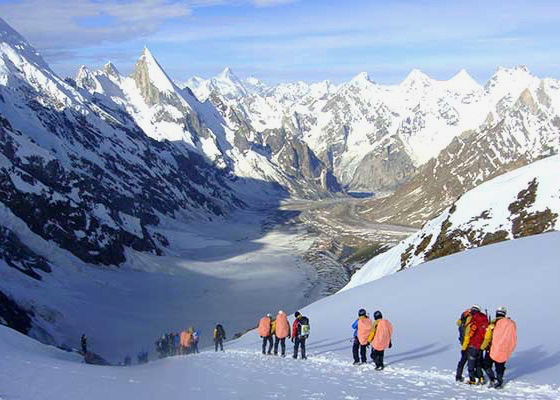A recent scientific analysis has issued a stark forecast for the Hindu Kush Himalaya (HKH) region, cautioning that up to 75% of its glacier ice may vanish by the end of the century if current climate trends persist. The study raises alarms about the grave consequences such a loss would pose for water resources, biodiversity, and the livelihoods of millions residing in downstream areas.
The research, led by the International Centre for Integrated Mountain Development (ICIMOD), paints a dire picture for the vast mountain region, which spans across eight nations including India, China, Nepal, Pakistan, and Bhutan. Often referred to as the “Third Pole” due to its immense frozen reserves, the HKH region is experiencing accelerated glacier retreat, driven by rising global temperatures and changing weather patterns.
Even in the event that the global temperature increase is limited to 1.5°C, the study estimates a potential ice loss of 30 to 50 percent. Under higher emission scenarios, that figure may soar to as much as three-quarters of the glacier mass by 2100. The findings reflect the rapidly growing influence of anthropogenic climate change in this fragile environment.
“Glacial melt is intensifying at a pace beyond historical precedent,” stated Dr. Izabella Koziell, Deputy Director General of ICIMOD. “The current trajectory indicates not just environmental degradation, but a significant threat to regional stability and human security.”
The Hindu Kush Himalaya is the source of ten critical river systems, including the Indus, Ganges, and Brahmaputra, which collectively support nearly two billion people across Asia. These rivers rely on seasonal glacial melt to sustain water flow, particularly during dry periods. A reduction in glacial volume could severely disrupt agriculture, hydropower, and drinking water supplies across South Asia.
Additionally, the study raises concern over the growing risk of glacial lake outburst floods (GLOFs)—a phenomenon caused when lakes formed by retreating glaciers overflow, often with devastating consequences. Several such incidents have already been recorded in countries like Nepal and Bhutan, endangering communities and infrastructure.
Beyond water security, the Himalayan ecosystem faces a profound shift. Species uniquely adapted to high-altitude environments are at risk as their habitats shrink. Coupled with increasing landslides, erratic rainfall, and food insecurity, the region may experience climate-induced displacement and socio-economic disruption in the coming decades.
Conclusion:
The study underscores the urgent need for comprehensive climate action, both to curb greenhouse gas emissions and to strengthen local adaptation measures. Governments, researchers, and international organizations are being called upon to invest in sustainable mountain development, early-warning systems, and regional cooperation.
The fate of the Hindu Kush Himalaya, a vital lifeline for nearly a quarter of the global population, stands as a powerful symbol of the broader global climate emergency. Without swift intervention, the loss of its icy reserves may become a permanent scar on the planet’s environmental history.



